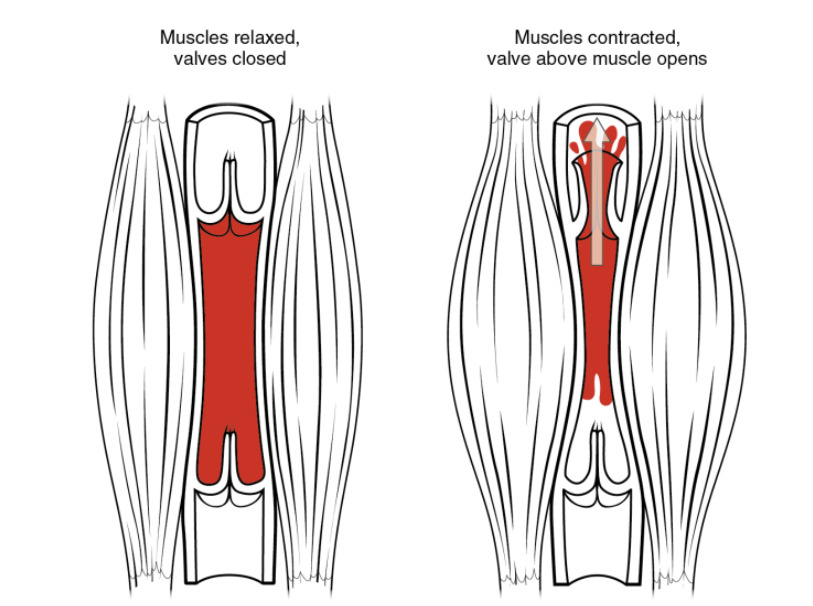Playlist
Show Playlist
Hide Playlist
Blood Pressure Effects on the Valsalva Maneuver – CV Response to Exercise
-
Slides CVresponse VascularPhysiology.pdf
-
Download Lecture Overview
00:00 One thing you always have to be cognizant of when you are doing either isometric exercise or isotonic exercise is what you are doing with your breath. It's very easy to hold your breath during these maneuvers causing the strain-like response. We call this a Valsalva maneuver and it's a forced expiration against the closed glottis, a bearing down movement. As you do that response, you get corresponding changes in blood pressure. There are four different phases associated with the Valsalva or breath hold like that. First you get an increase in blood pressure then you get a decrease in blood pressure as the baroreflex kicks in and then once you release that bearing down or the holding your breath, you get a reflex increase in blood pressure and then it comes back to normal. So why this is important is because your blood pressure response to exercise is affected by your breath when you're doing that particular exercise. So let's look now more closely what happens if you do resistance exercise without holding your breath. During resting conditions, we have this kind of boxes that we're going to use for blood pressure. The top part of the box is your systolic blood pressure, the bottom portion of the box is your diastolic blood pressure and that red line that's mean arterial blood pressure. So we have blood pressure now plotted on the Y axis and first you're in resting conditions meaning that maybe you're on a weight machine but you haven't actually done any work yet. If you do light to moderate exercise, you have an increase in systolic blood pressure, increase in diastolic blood pressure and an increase in mean pressure. If you do moderate to vigorous exercise with resistance training, you get even larger increases in systolic blood pressure, diastolic blood pressure and mean pressure. So simply doing anaerobic exercise that involves resistance work increases your blood pressure acutely while you're doing that activity. That's important concept to keep in mind if you already have someone who is hypertensive and you're worried about further increasing their blood pressure. Now why do we get these blood pressure responses to resistance exercise? Well the first is very simple. It is you're thinking about doing the exercise. That is called central command or feed forward mechanism and it's simply your drive to want to do that exercise. Simply by thinking about doing it you are committing yourself to start to have increases in heart rate and blood pressure in anticipation of that result of exercise. There are also some feedback components The baroreceptor's feedback, if there is an increase in blood pressure you get a corresponding change in heart rate. Chemoreceptors are also involved. If you start to utilize or build up too much carbon dioxide, that will also feed in to this exercise pathway causing an increase in blood pressure. Finally probably the most important for the resistance exercises associated with isometric or isotonic exercise are the skeletal muscle afferents. These are class III and class IV muscle afferents that respond to the local milieu of things like hydrogen ions, local metabolites, things that will engage a muscle afferent. If you know that your muscles are increasing their activity, then you'll want to respond by increasing perfusion to them. How does the body increase perfusion? By increasing delta P or the driving pressure. So if you have a greater blood pressure response, you should be able to perfuse those muscles. All of these feedback mechanisms as well as the feed forward mechanisms integrate together in the brainstem to give a coordinated response to resistance exercise.
About the Lecture
The lecture Blood Pressure Effects on the Valsalva Maneuver – CV Response to Exercise by Thad Wilson, PhD is from the course Vascular Physiology.
Included Quiz Questions
Which of the below is a cardiovascular response to resistance exercise?
- Increase in diastolic blood pressure
- Decrease in mean arterial pressure
- Decrease in systolic blood pressure
- Decrease in heart rate
- Decrease in diastolic blood pressure
Which phase of the Valsalva maneuver is the transient phase involving the release of strain?
- Phase III
- Phase I
- Phase II
- Phase IV
- Phase V
Which of the following is the drive to want to do the exercise?
- Feedforward mechanism
- Feedback mechanism
- Baroreceptor response
- Unmotivated
- Muscle afferent signaling
Customer reviews
5,0 of 5 stars
| 5 Stars |
|
5 |
| 4 Stars |
|
0 |
| 3 Stars |
|
0 |
| 2 Stars |
|
0 |
| 1 Star |
|
0 |




